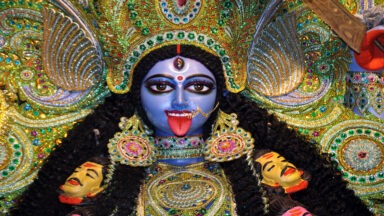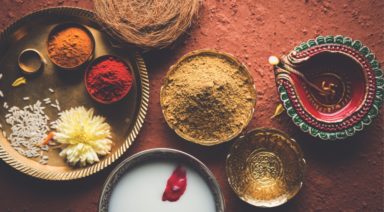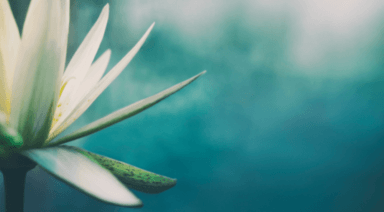Ridding Your Negative Personal Narratives With Lord Shiva

Lord Shiva is a well-known and worshipped Hindu deity. He is one of the Holy Trinity (the Trimurti), which consists of Lord Brahma, Lord Vishnu, and Lord Shiva. What each represents in our familiar terms are brand new beginnings (Brahma), the middle of everything in existence (Vishnu), and the endings (Shiva). When Shiva, as the Lord of Dissolution, gives us the endings, he also provides the space for Brahma to instill a bright new beginning. It is from the void of nothingness, or space, left after something comes to an end, that Brahma responds by bringing the start of something new.
Shiva, Lord of Dissolution
Shiva, The Auspicious One, is also known as Mahadeva or The Great God. He is worshipped as the Supreme Being in Shaivism, a major institution within Hinduism. I like to explain the concept of endings giving way to brighter new beginnings with the metaphor of a bookshelf filled with storybooks that represent our own considerations about ourselves.
Imagine you have a large bookshelf in your mind. The bookshelf is jam-packed with books whose titles represent your own self-judgments or concepts of yourself. One thing to mention is that we are constantly in judgment of ourselves. We are usually in judgment of something and judgments can be good or bad. For instance, we might see a book entitled ‘I am a great Mother,’ or ‘I am a giving person.’
Conversely, we have the debilitating narratives. ‘I am unworthy’ or ‘I am not flexible enough’ as some of the titles we’re experiencing. But the debilitating narratives are simply opportunities to grow or bring Shiva into our lives.
Shiva comes along as the Lord of Dissolution; he shows us where we are hindering our growth with certain stories or ways of being. For instance, when you decide you are fed up with thinking of yourself as unworthy, or not good enough, Shiva gives you the willpower to dissolve that story. The ‘I am unworthy’ book gets removed from the shelf and thrown to the wayside.
What is left behind is an open space, an open space ready and willing to house a new book with a new title. Brahma steps in and gives us the capacity to formulate a new storybook title that feels brighter and shinier as a new beginning, or judgment of self. For example, we switch from the ‘I am unworthy’ mantra to ‘I am good enough.’ In this way, Shiva and Brahma give us the ability to challenge our belief system and change it for self-betterment.
Shiva, Lord of Dance
A common depiction of Shiva is one of a dancing four-armed deity. In this form, Shiva is known as Nataraja, or the Lord of Dance. He is seen dancing in a halo of fire which represents samsara, or ‘flowing around.’ In his upper right hand, Shiva holds a hand drum said to have drummed the first drum beats to help create everything, paired with the sound of “Om.”
His upper left hand holds a flame said to have the ability to destroy on behalf of transformative new beginnings. His bottom lower right hand holds abhayamudra, a gesture used to convey fearlessness. His bottom left hand mimics the lifted position of his left leg. This symbolizes a respite soul’s find from the earthly troubles on a path towards soul liberation. His lifted left leg is a journey towards this elevated consciousness. Finally, the snake he wears around his waist is the creative energy that exists in our psychic body.
Nataraja and Samsara
Shiva Nataraja is seen standing with his right foot on a small dwarf. The small dwarf illustrates our tendencies to worry, to stress, to attach, or to be afraid. By standing on the dwarf, Shiva helps us recognize and squash our negative tendencies on our way to spiritual growth.
The ring or halo of fire Shiva is dancing in represents samsara, our human bias towards attaching ourselves to or expecting certain outcomes. Basically, it is a resistance to the never-ending cycle of birth, death, and rebirth. This cycle is a daily rhythm and is considered the basis of all existence.
As human beings, it is easy to become attached to certain people, animals, circumstances and to resist this ever-changing and constantly moving rhythm which is the ebb and flow of our lives. When we feel a resistance to this flux of nature, Shiva gives us strength. If we feel fearful of losing someone or something, Shiva gives us strength to endure and eventually to let go and accept that change is inevitable. He helps us find a deep appreciation of the time we had versus a dwelling on what we are missing.
In Shiva’s dance of creation and destruction, he gifts us the ability to use rhythm and dance to step into the flow of energy coursing through various patterns and relationships. In this dance, we see there is beauty to be found in all. His dance is a way to embrace the Universal truth that change is inevitable and to embrace the truth by reveling in the music, rhythms, and the grace of welcoming change.

Be Like the Lord of Dance
If you find yourself in need of some Shiva, to be fearless and bravely face the changes in life, to be free of the limitations we create for ourselves through ego and the powerful emotions attached to our ego, there are a few ways to summon him.
*Seated Meditation: Shiva was known as the great meditator. With your eyes opened or closed, sit and watch your thoughts move through your mind. Without attachment to outcome, try your best to grow the gaps of quiet in between the thoughts. The moment we get present, we truly feel and experience. We forget about the burdens of the past and stressors of the future. We get centered and grounded in our bodies.
*Modified version of Natarajasana (Nataraja’s Pose): I recommend a warm-up for this pose to loosen up the shoulders, quadriceps, hips and hamstrings. Also begin with a simple balancing pose like tree pose which will help the body balance more easily. After your warm-up, stand on your right foot. Reach back with your left hand to grab your left ankle or foot. As you progress over time, you will be able to kick back farther and farther into your left hand to create a balancing, standing, one-legged heart opener. Feel your breath as the beat of Shiva’s drum. Get lost in the rhythm of your inhales and exhales. Release and practice on the other side.
*Fearlessness Mudra: I really love abhayamudra. It feels to me like a ‘bring it on; I can handle whatever is in store for me’ kind of mudra. In a seated position, raise your right hand up towards the shoulder, palm facing forward with your elbow in at your side. Join your right index finger to your thumb. Your left hand simply rests near the left thigh or knee, palm facing up. Take some deep breaths and invite a sense of presence, courage, and fearlessness.
*Shiva Mantra: Try saying out loud or in silence ‘Om Namah Shivaya’ to call in Shiva. If you prefer English, I love ‘I am powerful,’ ‘I am strong,’ or even ‘I am courageous.’ And remember – YOU are powerful and strong!
Inviting the Fierce Feminine Mother Kali Into Your Life

I am particularly fond of participating in or teaching classes themed around the Goddess Kali. Creating an invitation for Kali to enter our life is a way to invite fierceness into our being. She is the powerful and ferocious energy of the feminine mother.
Kali is often referred to in Hindu mythology as the dark goddess, the goddess of doomsday, the goddess of time, and the goddess of death. But once we delve deeper into what she really stands for, we see beyond this doomsday classification. She is ferociously powerful, and in her power, she is the fierce representation of motherly love; a mother’s bold and fiery force of love, as well as her innate desire to protect and support her children.
Kali is a form of Shakti or the feminine universal energy that motivates creativity and fertility. She is also an incarnation of Parvati, the Earth Mother (first wife of Shiva of the Holy Trinity). In this way, she also becomes a feminine counterpart to Lord Shiva, the God of Destruction. Her name has been translated as ‘she who is black’ or ‘she who is death.’
Many of the depictions of Kali show a warrior goddess to be feared. She is often seen wearing a necklace of chopped-off heads and a skirt of severed arms. She wields a knife dripping blood in one hand, holds a decapitated head in the other, and has a red lolling tongue dripping with blood.
As the goddess of time, Kali embodies the true nature of time. She demonstrates how time eventually absorbs all things. She is the ending to the beginnings and middles. Remember also that every ending holds a void of space, or nothingness, and from the space of nothingness, bright new beginnings are generated.





































